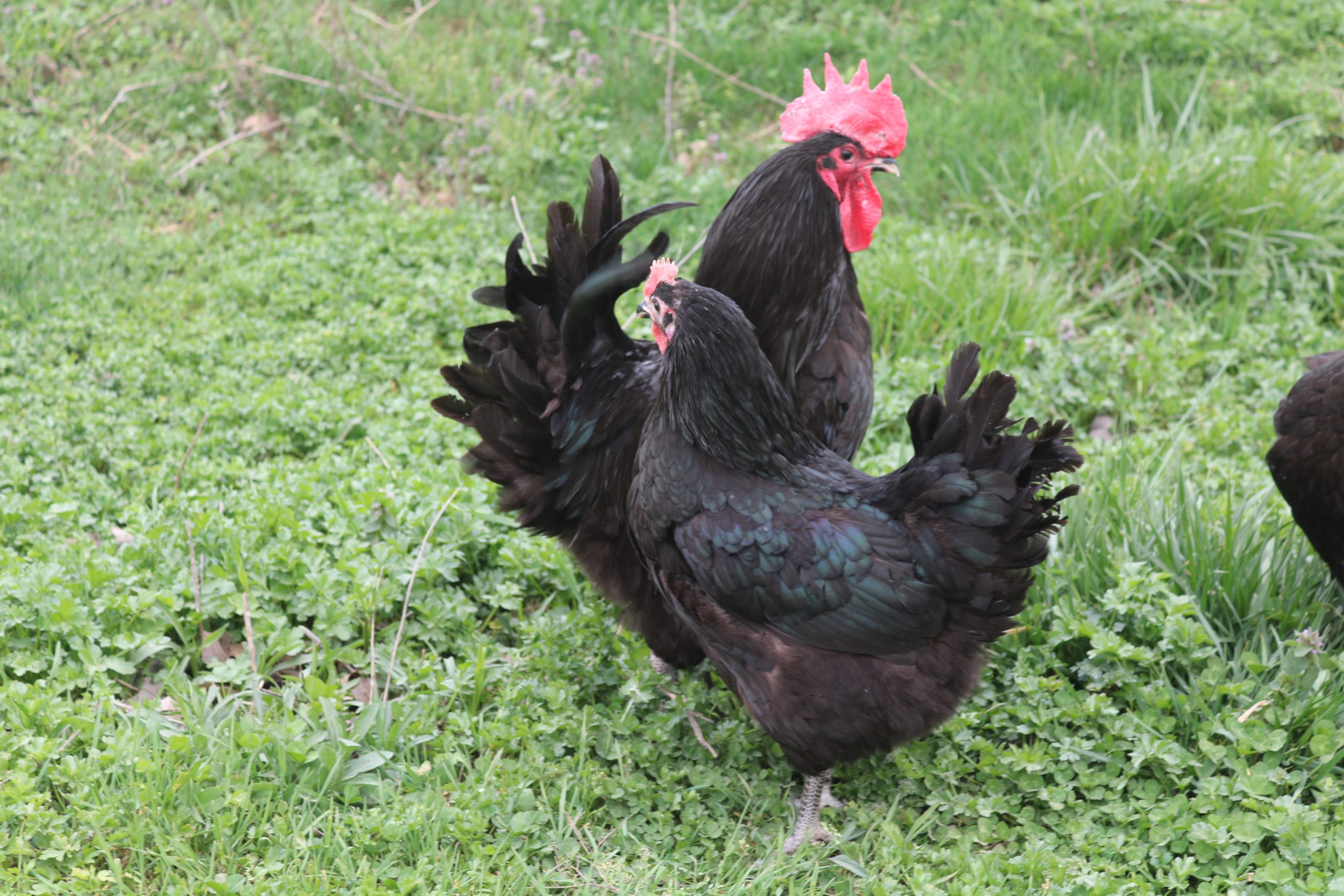They come with lustrous black, bright white, or blue feathers but Jersey Giants are really a mellow yellow chicken breed. The reason goes back to the breed’s creation in the late 1800s.
Back then, few families enjoyed chicken or turkey dinners for one reason. It was expensive. Birds of that long-ago era gobbled down plenty of food yet grew slowly.
Raising them to market size was a slow and expensive process so, typically, chicken and turkey dinners were reserved for holiday meals and special meals served to guests.
New Jersey chicken breeders John and Thomas Black were determined to make chicken a more common American meal. Between 1870 and 1880 they crossed several breeds, including Langshans, Dark Brahmas, and Javas to create what came to be called the Black Jersey Giant. Although it had black feathers it was named in honor of the Black Brothers.

Their success was mixed. The new breed grew to a huge size. A rooster can tip the scales at 13 pounds with hens only a little smaller. Originally, they had black feathers so why are they a mellow yellow breed?
The answer’s simple. Back then many families raised small flocks. Mellow is a desirable trait. Giants are so big they have a tough time flying, making them easy to keep inside a small fence. Many breeds are considered to be nervous, or “flighty.” They spook easily and sometimes fly over even a tall fence. Not Giants. The Black Brothers knew that small flock owners preferred mellow, so the trait became a goal of the breed’s development.
Yellow? Consumers are fickle. English diners prefer a chicken with white skin. Not Americans. They like yellow skin. So, a Black Jersey Giant has black feathers and dark shanks, but underneath is yellow skin. The underside of their feet is also bright yellow.
The Giant is a wonderful backyard bird. They’re mellow and are easy to handle. Hens are prolific layers of large brown eggs. The Black Brothers did a great job creating the breed, but their timing kept them from ever becoming an important commercial meat breed. Giants grow slowly, and it takes plenty of expensive feed for them to reach the size of a small turkey. To reach full size can take eight or nine months.
During the Twentieth Century many breeds and hybrids were developed that grew much faster than Giants while eating less feed per pound of growth. Cornish Rocks, for example, reach market size when only about six weeks old and eat much less feed than older breeds. That led to commercial success for growers and made chicken a common and inexpensive lunch or dinner.
Despite their slow growth Jersey Giants are wonderful birds to include in a backyard flock. After all they are mellow and fun to be around. The black variety has impressive almost shiny plumage, while White Giants are brilliant in the sunshine. There is even a blue feathered Giant. All are great layers, although they may start producing eggs slower than better known Rhode Island Reds or ISA Browns.
They are big and may need slightly larger nests and pop hole doors than more standard sized breeds, but generally they can squeeze into normal sized nests.
The Jersey Giant breed enjoys a rich heritage. Although it’s not economic for commercial meat or egg producers it is a wonderful breed perfectly suited to a small flock in the backyard.